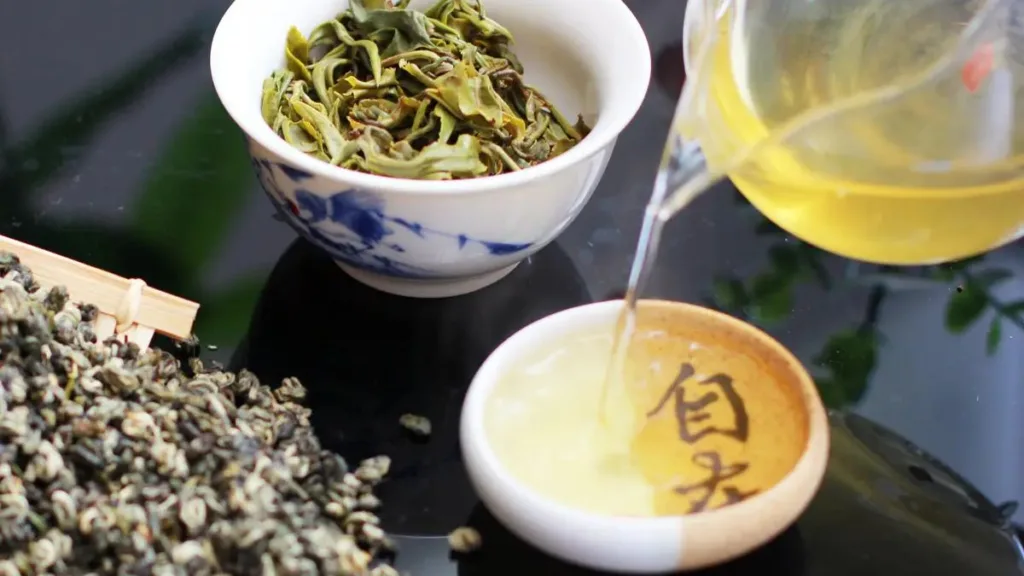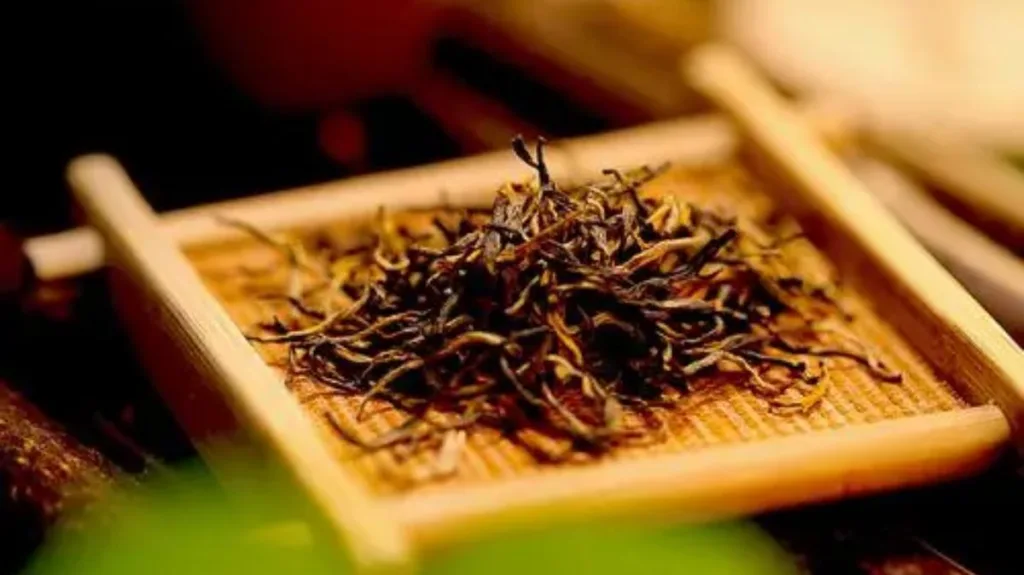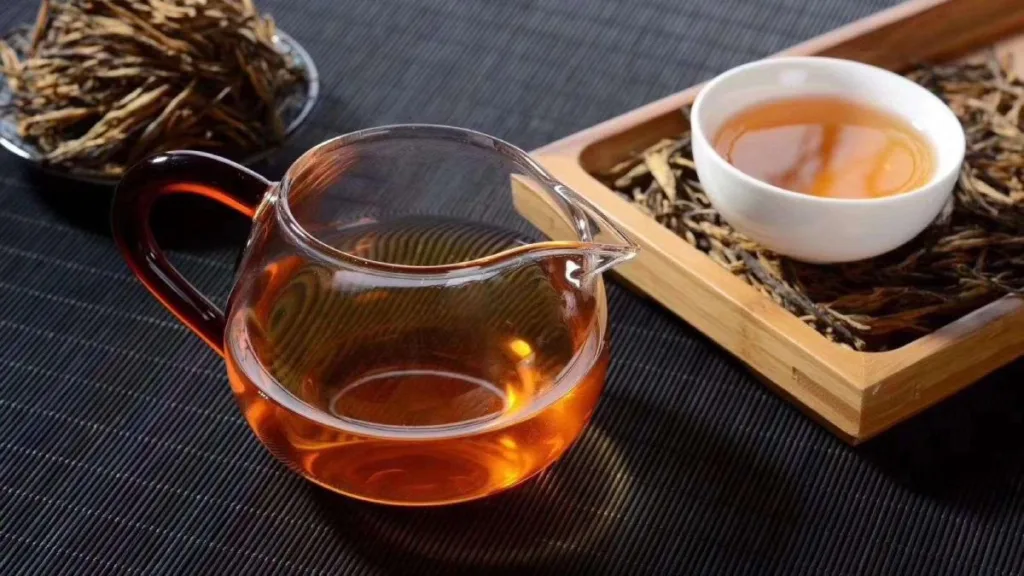Biluochun Tea, often referred to as “Green Snail Spring” or “Scary Fragrance,” is a traditional Chinese tea with a history spanning over a millennium. Among the top ten famous Chinese teas, Biluochun stands out as a green tea with distinctive characteristics. Besides its well-known name, it is associated with various other monikers, including “Dongting Tea,” “Xin Xue Tea,” “Gongfu Tea,” and, interestingly, “Scary Fragrance.”
The origin of the nickname “Scary Fragrance” is an intriguing tale from the Qing Dynasty. Legend has it that during the reign of Emperor Kangxi, an old nun ventured to Dongshan’s Biluofeng (Green Snail Peak) by Taihu Lake to appreciate the spring scenery. She casually plucked a few leaves by the roadside, intending to take them back to her temple for tea. The next morning, she awoke to a delightful, lingering aroma and realized that it was emanating from the leaves she had picked the previous day. In her excitement, she brewed the leaves. As she lifted the lid of the teapot, she couldn’t help but exclaim, “Scary Fragrance!” The extraordinary aroma and the bright, green tea liquor took her by surprise. Overjoyed, the old nun shared her discovery, and the locals soon began calling this tea “Scary Fragrance.” Emperor Kangxi himself bestowed the name “Biluochun” upon the tea, a name that remains in use to this day.
The Origin of the Name Biluochun:
One historical account, found in the Qing Dynasty’s “Wild History Compendium” (Volume 1), describes that in the cliffs of the Green Snail Peak in Dongting, there were a few wild tea plants that the locals referred to as “Scary Fragrance.” During the Kangxi Emperor’s reign, an official, Zhu Luo, purchased this tea from a local tea expert, Zhu Zhengyuan, to present as a tribute to the emperor. Emperor Kangxi found the name “Scary Fragrance” somewhat crude and renamed it “Biluochun.” From that point on, Biluochun tea was officially sourced and sent as tribute.
An alternative legend suggests that during the Ming Dynasty, Prime Minister Wang Ao, who hailed from Luxiang near Dongshan, was responsible for giving Biluochun its name. Another story comes from the “Suijianlu,” which mentions the existence of tea on Dongting Mountain that was somewhat similar to “Jie tea” in appearance and possessed an exquisite sweet fragrance. This tea was commonly referred to as “Scary Fragrance,” and the one from the Biluofeng area was considered the best, earning it the name “Biluochun.” If this account is accurate, Biluochun tea dates back to the Ming Dynasty and was already renowned before Emperor Kangxi’s reign.
Yet another version of the name’s origin is mentioned in Wang Yingkui’s “Liunan Suibi.” It states that in the spring of the 38th year of Kangxi’s reign (1699), during the emperor’s third southern tour by Taihu Lake, Governor Song Luo purchased finely crafted “Scary Fragrance” tea from the local tea master Zhu Zhengyuan as a tribute. However, Emperor Kangxi found the name “Scary Fragrance” unsuitable for the imperial court. Therefore, he renamed it “Biluochun,” a name derived from its distinct characteristics: the tea’s bright green, snail-like shape, and the fact that it is harvested in spring. Henceforth, Biluochun rose to global fame and became a tributary tea in the Qing imperial court.
Classification of Biluochun Tea:
The national standard for Dongting Biluochun tea classifies it into five levels: Special Grade 1, Special Grade 2, Grade 1, Grade 2, and Grade 3. The grades are determined by various factors, including the pan-frying temperature, the amount of leaves used, and the level of force applied during shaping. Lower grades tend to have higher pan-frying temperatures, greater leaf quantities, and heavier shaping.
The finest Biluochun tea appears silver-white with hidden hints of emerald, featuring long, spiral-shaped leaves adorned with white hairs. After steeping, it yields a clear, bright green liquor with a rich, mellow taste and a lasting sweet aftertaste. In contrast, lower-quality Biluochun may have darker leaves with fewer white hairs, leading to a duller appearance and a less aromatic, even flavorless brew.
Biluochun’s exceptional quality and characteristics have earned it a place of honor in the world of tea. As noted by the Qing scholar Zhen Jun in his book “Tea Discourse” at the end of the Qing Dynasty, “Biluochun is the best tea; if not available, then Tianchi from Suzhou, followed by Longjing; Jecha [now known as Liuan Guapian] is slightly inferior.” This demonstrates that Biluochun has long held a prestigious position in the history of Chinese tea. Its notable features include slender, coiled leaves, covered in a layer of silver-white and emerald hairs, a rich and lingering aroma, a mellow and sweet taste, a bright green and clear liquor, and tender, bright green leaves in the bottom of the cup. It is often praised as having “one tenderness (bud and leaves) and three freshness (color, aroma, and flavor).”



